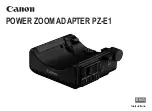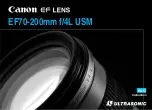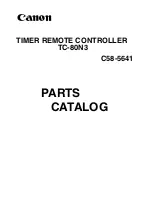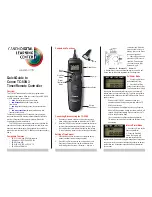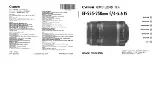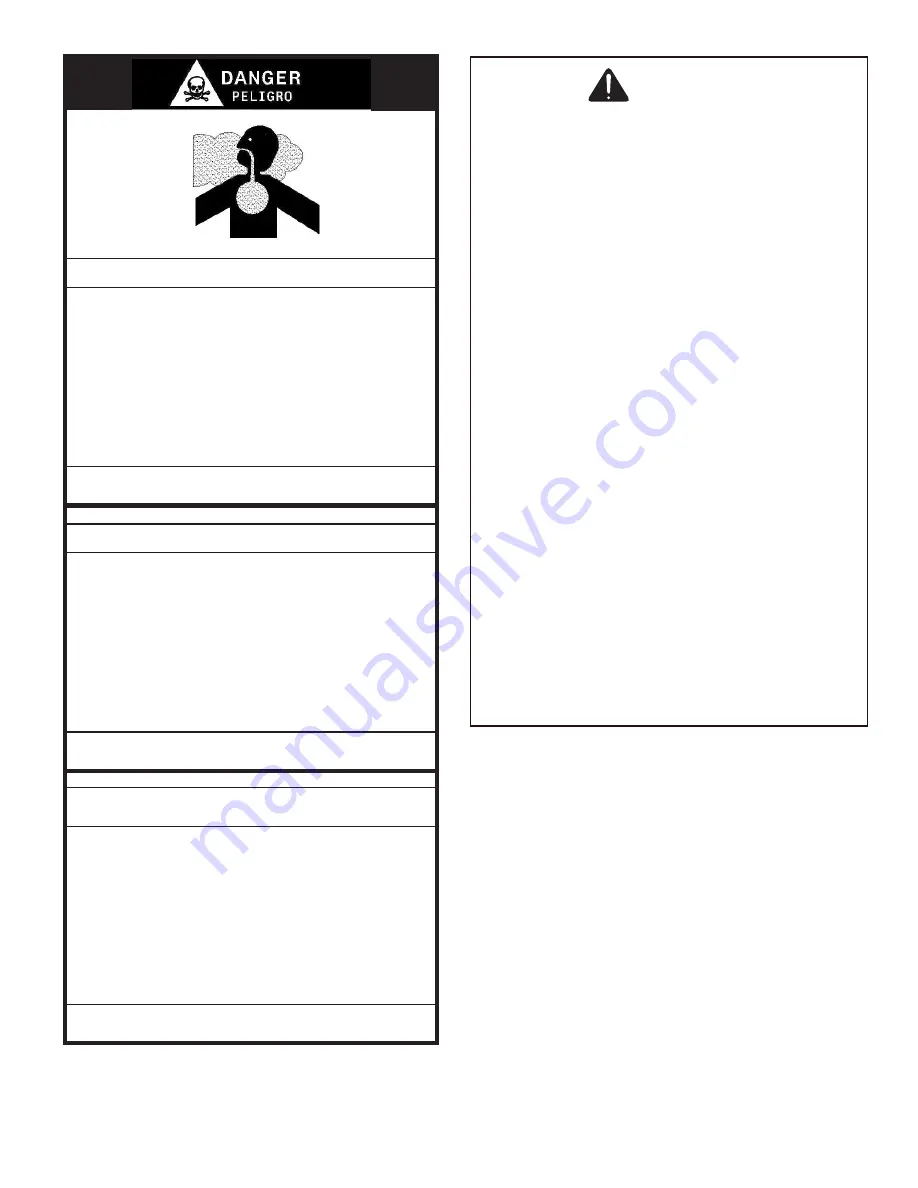
4
CARBON MONOXIDE POISONING HAZARD
Special Warning for Installation of Furnace or Air Handling Units in
Enclosed Areas such as Garages, Utility Rooms or Parking Areas
Carbon monoxide producing devices (such as automobiles, space
heater, gas water heater, etc.) should not be operated in enclosed
areas such as unventilated garages, utility rooms or parking areas
because of the danger of carbon monoxide (CO) poisoning resulting
from the exhaust emissions. If a furnace or air handler is installed in
an enclosed area such as a garage, utility room or parking area and a
carbon monoxide producing device is operated therein, there must be
adequate, direct outside ventilation.
This ventilation is necessary to avoid the danger of CO poisoning
which can occur if a carbon monoxide producing device continues
to operate in the enclosed area. Carbon monoxide emissions can be
(re)circulated throughout the structure if the furnace or air handler is
operating in any mode.
CO can cause serious illness including permanent brain damage or
death.
B10259-216
RIESGO DE INTOXICACIÓN POR MONÓXIDO DE CARBONO
Advertencia especial para la instalación de calentadores ó manejadoras
de aire en áreas cerradas como estacionamientos ó cuartos de servicio.
Los equipos ó aparatos que producen monóxido de carbono (tal
como automóvil, calentador de gas, calentador de agua por medio de
gas, etc) no deben ser operados en áreas cerradas debido al riesgo
de envenenamiento por monóxido de carbono (CO) que resulta de las
emisiones de gases de combustión. Si el equipo ó aparato se opera
en dichas áreas, debe existir una adecuada ventilación directa al
exterior.
Esta ventilación es necesaria para evitar el peligro de envenenamiento
por CO, que puede ocurrir si un dispositivo que produce monóxido de
carbono sique operando en el lugar cerrado.
Las emisiones de monóxido de carbono pueden circular a través del
aparato cuando se opera en cualquier modo.
El monóxido de carbono puede causar enfermedades severas como
daño cerebral permanente ó muerte.
B10259-216
RISQUE D’EMPOISONNEMENT AU MONOXYDE DE CARBONE
Avertissement special au sujet de l’installation d’appareils de chauffage
ou de traitement d’air dans des endroits clos, tets les garages, les
locaux d’entretien et les stationnementss.
Evitez de mettre en marche les appareils produisant du monoxyde
de carbone (tels que les automobile, les appareils de chauffage
autonome, etc.) dans des endroits non ventilés tels que les
d’empoisonnement au monoxyde de carbone. Si vous devez faire
fonctionner ces appareils dans un endroit clos, assures-vous qu’il y
ait une ventilation directe provenant de l’exterier.
Cette ventilation est nécessaire pour éviter le danger d’intoxication
au CO pouvant survenir si un appareil produisant du monoxyde de
carbone continue de fonctionner au sein de la zone confinée.
Les émissions de monoxyde de carbone peuvent etre recircules dans
les endroits clos, si l’appareil de chauffage ou de traitement d’air sont
en marche.
Le monoxyde de carbone peut causer des maladies graves telles que
des dommages permanents au cerveau et meme la mort.
B10259-216
WARNING
CARBON MONOXIDE POISONING HAZARD
Failure to follow the steps outlined below for each appliance
connected to the venting system being placed into operation
could result in carbon monoxide poisoning or death.
The following steps shall be followed with each appliance
connected to the venting system placed in operation, while any
other appliances connected to the venting system are not in
operation:
1. Seal any unused openings in the venting system.
2. Inspect the venting system for proper size and horizontal
pitch, as required by the National Fuel Gas Code, ANSI Z223.1 or
the Natural Gas and Propane Installation Code,
CSA B149.1-15 and these instructions. Determine that there
is no blockage or restriction, leakage, corrosion and other
deficiencies which could cause an unsafe condition.
3. As far as practical, close all building doors and windows and
all doors between the space in which the appliance(s) connected
to the venting system are located and other spaces of the
building.
4. Close fireplace dampers.
5. Turn on clothes dryers and any appliance not connected
to the venting system. Turn on any exhaust fans, such as
range hoods and bathroom exhausts, so they shall operate at
maximum speed. Do not operate a summer exhaust fan.
6. Follow the lighting instructions. Place the appliance being
inspected in operation. Adjust thermostat so appliance shall
operate continuously.
7. Test for spillage from draft hood appliances at the draft hood
relief opening after 5 minutes of main burner operation. Use the
flame of a match or candle.
8. If improper venting is observed during any of the above tests,
the venting system must be corrected in accordance with the
National Fuel Gas Code ANSI Z223.1/NFPA 54 and/or National
Gas and Propane Installation Code CSA B149.1-15.
9. After it has been determined that each appliance connected
to the venting system properly vents when tested as outlined
above, return doors, windows, exhaust fans, fireplace dampers
and any other gas burning appliance to their previous
conditions of use.




















